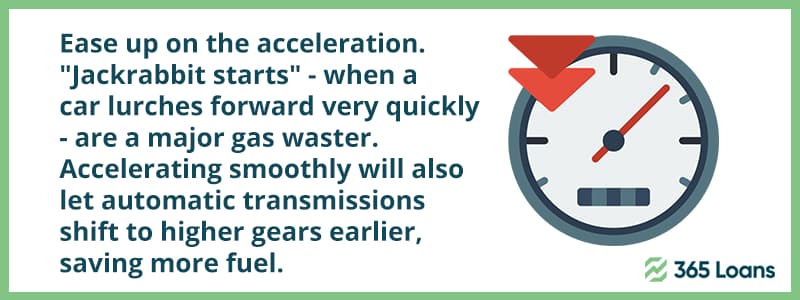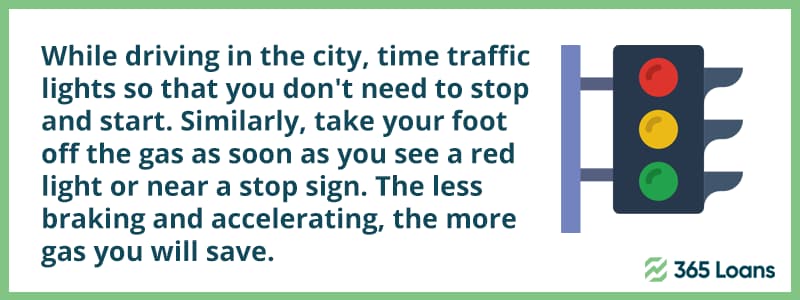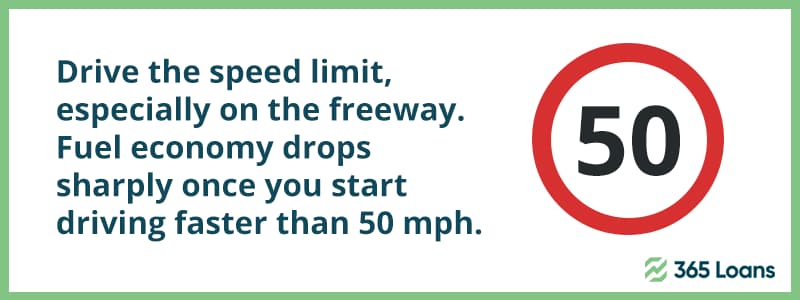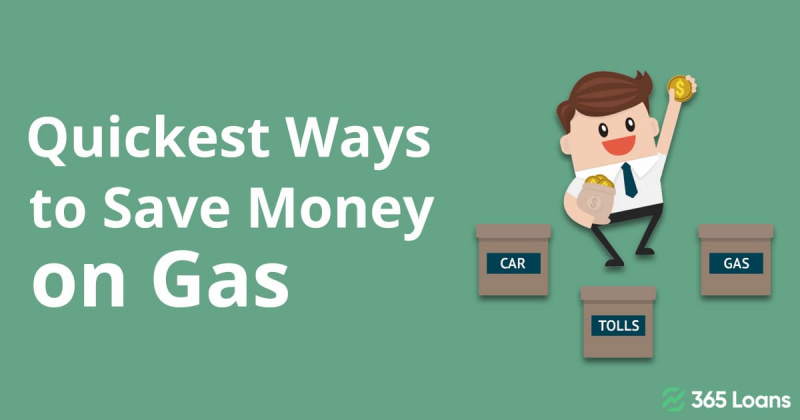Although the national average gas price has been steadily declining since reaching a record high of $5.02 on June 16, it is still 16% higher than it was at this time last year, opening up various discussions about ways to save money on gas. Additionally, Californian drivers continue to pay more than $5.50 per gallon, which adds another $18 to the cost of filling a 15-gallon tank.
The sustained rise in gas prices in 2022 is a result of both increasing demands for crude oil and a decreased supply that is partly attributed to the conflict in Ukraine. Nevertheless, you can take a few straightforward steps to reduce your gas costs, even though you probably cannot do much about the issues affecting the global economy.
Continue reading for information on price monitors, advice for more effective fuel use, reward programs, and more.
10 simple methods for saving money on fuel
Here are a few simple ways to save money on your car by reducing your gas costs – from driving techniques to car maintenance and more.
1. Maintain eco-driving
You should always follow the speed limit, acceleration should be gradual, and coasting should be increased. They also have very economical driving practices.

Therefore, the next time you approach a red light, avoid accelerating and abruptly braking at the intersection. Instead, put your foot off the gas and coast to a stop. Avoid shooting it when it becomes green. Depending on the speed and frequency of your stops and starts, these safe driving techniques can increase your fuel efficiency by up to 40%, according to FuelEconomy.gov.
Your fuel efficiency increases by 15% to 30% at highway speeds, compared to a wide range of 10% to 40% in stop-and-go traffic. Assuming local gas costs are at $4, it translates to a staggering 40 cents to $1.60 per gallon in savings.
2. Reduce your idle time
According to the federal government, idling can use up to half a gallon of gas each hour. So the most fuel-efficient course of action is to turn off your engine if you are stuck in a particularly long queue or waiting for someone to get in.

According to estimates from the federal government, opting to turn off your engine instead of idling might save you up to 4 cents per minute, depending on the size of your engine and your AC usage patterns.
3. Map your routes
Planning beforehand can definitely pay off when it comes to driving. Think of this approach as a general plan for determining when, where, and how you are going to drive.

When organizing your travels, you should think about the following issues how to save money while traveling or commuting, asking yourself the following:
- Is there a more economy-friendly method I can take to get to my destination?
- Can I combine my errands if I have to drive myself somewhere?
- Can I schedule a carpool with a coworker on specific days?
- Can I use my bike or public transportation on particular days to get to work?
- Can I drive outside of rush hour if I have to commute to work?
If you said “yes” to even one of them, making a plan around it and following it can significantly reduce how much gas you consume.
Carpooling, according to the agencies, can cut your weekly fuel costs in half by saving on petrol costs and decreasing wear and tear on your vehicle.
4. Monitor fuel prices
Follow the trends and look for the cheapest gas in your town. But instead of driving around town, consider using a website or an app to stay current with the prices.
A well-known website for monitoring gas prices in the US and Canada is GasBuddy. It also offers information for the gas tracker pages maintained by the US Office of Energy Efficiency & Renewable Energy. What’s more, you can take that information to your phone with their mobile app for Android and iOS.
5. Utilize gas rewards cards and programs
Large gas stations generally offer credit cards and incentive programs that pay you a percentage back. This method is worth thinking about if you do not always have cash on hand because, when done wisely, it could save you a few bucks every tank.
For example, ExxonMobil claims that its reward programs will save you at least 3 cents per gallon, while Shell and BP claim that you will save at least 5 cents per gallon. So always read the small print and do the arithmetic to see whether the rewards program is really worthwhile for you.
Also, remember that many gas stations charge more when paying with a credit card than with cash. And if you do not pay off your credit card amount in full each month, you risk paying interest on the balance. Instead, consider the pros and cons of having a rewards credit card.
6. Use cash to pay for gas
Pay close attention the next time you check the pricing on the large gas station billboards. It’s possible that the lowest price you find is a cash-only price. In certain circumstances, the discount may be implicit, and you won’t even notice a statement of a cash-only price. You might only learn the truth after paying with your credit card and realizing you overpaid by a few cents.
Gas prices vary between those paid with cash and those paid with credit cards, usually by 5 to 10 cents per gallon, but occasionally by much more.
Gas stations frequently increase their prices for card purchases because banks and credit card companies charge them fees for each transaction.
When you pay with cash, the gas station avoids these charges and gives you a discount due to some of their savings.
7. Regularly inspect your tires
Although it may seem unimportant, tire pressure impacts your gas mileage. Keeping your tires properly inflated could help you save between 2 and 12 cents per gallon, assuming local gas rates are around $4.
According to the Department of Transportation, you lose 0.2% in fuel efficiency for every PSI that your tires are underinflated. That might not sound like much, but given how widely tire PSIs can fluctuate, you might be losing significant gas mileage if you don’t pay attention to your tires.
8. Use cruise control sparingly
Cruise control can increase your fuel savings when appropriately utilized, but it’s not always a guaranteed gas saver. Automatic speed control might help you save on gas if you have long commutes or long, continuous drives. While driving on the highway, you may select the most fuel-efficient pace for your vehicle to lessen the tendency to go at variable speeds that use up gas more quickly.

It should go without saying that using cruise control in stop-and-go traffic, especially off the motorway, is ineffective.
9. Get rid of extra car weight
A generalization is that a vehicle will consume more gas the heavier it is. That also applies to the items you’re transporting or storing. If there are any removable objects in the car, such as storage containers or sporting equipment, you might want to take them out unless you absolutely need them for the journey.
Your fuel economy decreases by 1% for every 100 pounds of excess weight, according to the federal government. The same is true of any racks or storage areas on the top or back of your car. In addition to adding weight to your automobile, leaving a bike or canoe attached to it makes your car less aerodynamic.
10. Keep the engine in good condition
Needless to say, how properly your engine is maintained will have a significant impact on your gas mileage.
Fuel efficiency is often reduced by 4% as a result of engine problems, according to a report by the consulting company Energy and Environmental Analysis.
Make sure you are using the correct grade of motor oil as a straightforward maintenance piece of advice. If you are not already using the version that your manufacturer suggests, see your owner’s handbook to learn more. Based on $4 gas prices, this maintenance action alone could save you 4 to 7 cents per gallon.
Improving your fuel economy, in a nutshell
You can significantly reduce your gas consumption by mastering several simple fuel-efficiency techniques. The best ways to save money do not just involve getting the cheapest gas in town; it is your driving style and the way you take care of your car that are crucial factors to keep in mind.
If you are into finding neat ways to save money without sacrificing your lifestyle, then make sure to check out these articles:







